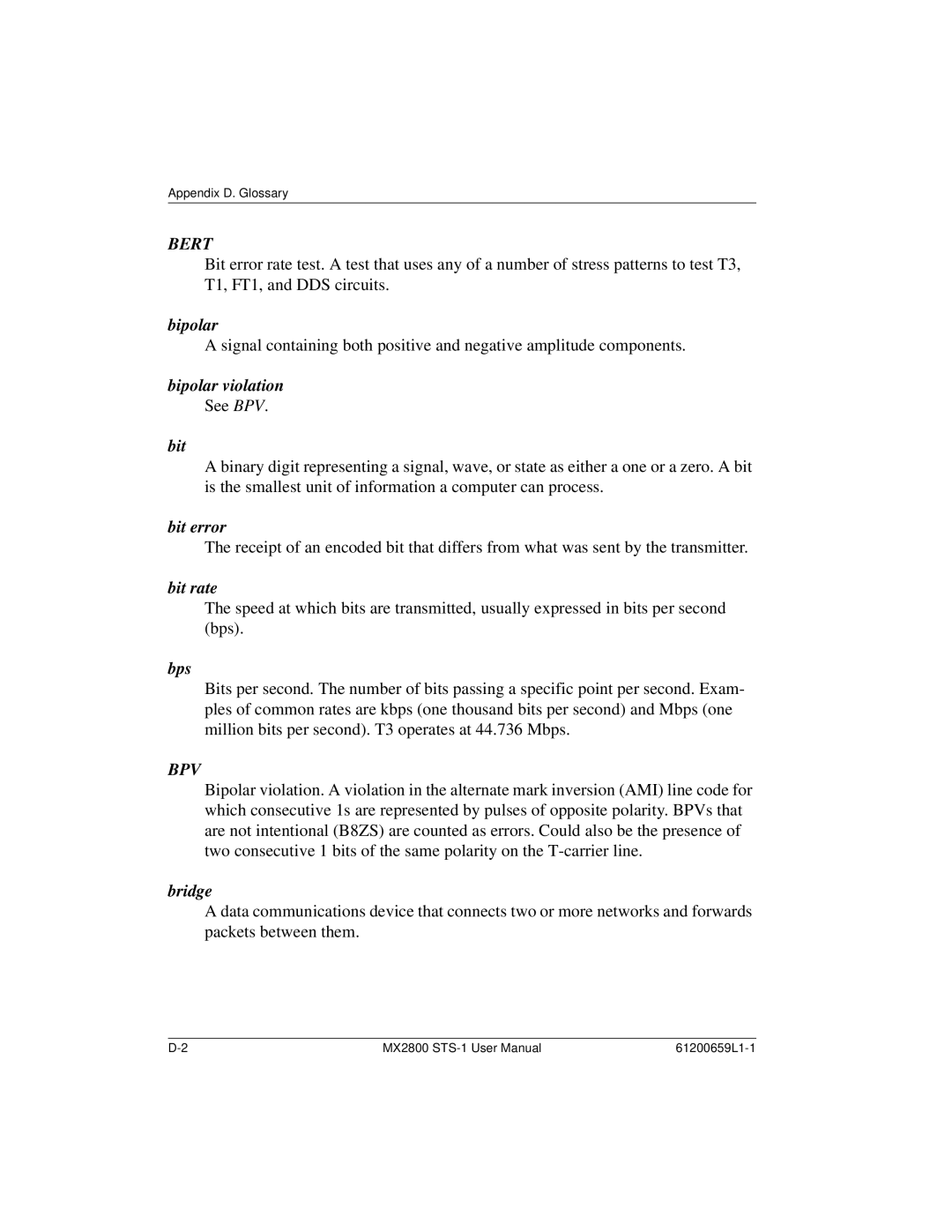1200287L1, 1200291L1, 1200657L2, 4200659L4, 4200659L6 specifications
ADTRAN is a leading provider of networking solutions, offering a wide range of products that cater to various telecommunications needs. Among its notable offerings are the models 4200659L6, 4200659L5, 4200659L3, 4200659L2, and 4200659L1. These models are pivotal in the realm of broadband access technology and facilitate high-speed connectivity, which is vital for today’s fast-paced digital environment.The ADTRAN 4200659 family is primarily designed for delivering robust Ethernet services over various infrastructures. One of the main features of these models is their support for both symmetrical and asymmetrical bandwidth options, which allows service providers to tailor their offerings to suit diverse customer needs. This flexibility ensures that both small businesses and large enterprises can find a solution that meets their specific requirements.
Each model in the 4200659 series supports advanced networking protocols, ensuring compatibility with a wide range of existing systems. This characteristic makes them ideal for seamless integration into existing networks, minimizing downtime and maximizing efficiency during deployment. The models also feature built-in diagnostics tools that help operators quickly identify and resolve connectivity issues, significantly reducing maintenance time and costs.
In terms of performance, the 4200659 models boast impressive throughput capabilities, with options to support data rates that facilitate high-definition video streaming, online gaming, and other bandwidth-intensive applications. With the increasing demand for faster internet connections, these models stand out by providing reliable service that can handle multiple concurrent users without compromising speed.
Additionally, the ADTRAN 4200659 family is built with scalability in mind. As a service provider's customer base grows, these models can be easily upgraded or expanded with additional modules, ensuring a future-proof investment. They also support various management interfaces, enabling simplified remote monitoring and configuration, which is essential for today's service delivery environments.
Finally, the design of the 4200659 models emphasizes energy efficiency, aligning with global efforts toward sustainability in telecommunications. Their compact form factor and low power consumption make them an environmentally friendly choice.
In conclusion, the ADTRAN 4200659L6, 4200659L5, 4200659L3, 4200659L2, and 4200659L1 models represent cutting-edge solutions for broadband access. With their advanced features, scalability, and focus on performance, these models are well-positioned to support the evolving needs of telecommunications providers and their customers in an increasingly connected world.

